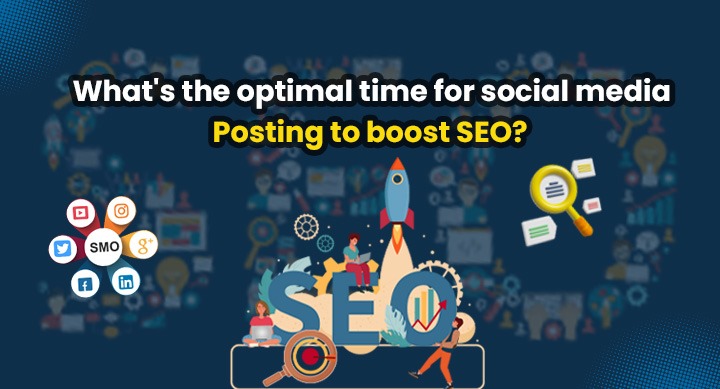
Social media is important in staying on top of online visitors to improve Search Engine Optimization ratings. To maximize your social media efforts, setting the right precedent when your audience is most engaged is important. This networking guide will help you learn how to decide the best social media posting times and maximize your search engine optimization efforts.
Step 1: Identify your target audience
1.1. Define your target audience: Understand who your perfect customers are.
Consider demographics, interests and online behavior. These records will guide your posting strategy.
1.2. Explore audience insights: Use social media analytics tools to get information about your followers’ interest programs, including which programs are likely to be the most engaging and what they contain.
Step 2: Find peak engagement times
2.1. Use analytics tools: Social media platforms offer integrated analytics tools (e.g., Facebook Insights, Twitter Analytics, Instagram Insights) that allow you to track your audience as they engage more with your posts and content . . . .
2.2. Third-party tools: Consider using 1/3-festival social media management tools to get additional intensity data and insights estimating your visual audience if so is interested
Step 3: Research Industry Benchmarks
3.1. Competitor Analysis: Study your competition’s social media marketing in Delhi NCR. Analyze when they publish and which posts carry out pleasant. This can offer treasured insights into your industry’s peak posting times.
Step 4: Experiment and Analyze
4.1. Test Different Posting Times: Conduct A/B assessments by posting content material at various instances throughout the day and week. Monitor the overall performance of every publisher to become aware of tendencies.
4.2. Track Key Metrics: Measure engagement metrics (likes, shares, feedback, click-on-via fees) and SEO performance (organic search traffic, keyword rankings) to determine the effect of your posting instances.
Step 5: Consider Time Zones
5.1. Time Zone Variations: If your target audience spans distinctive time zones, schedule posts to cater to the maximum substantial segments of your target market. It will help you understand the best social media posting times.
Step 6: Seasonal and Trend-Based Posting
6.1. Holidays and Events: Plan your social media posting agenda around vacations and industry activities. Leverage trending topics and hashtags to enhance your search engine marketing and engagement.
Step 7: Create a Consistent Posting Schedule
7.1. Content Calendar: Create a steady posting timetable based on your target market studies and evaluation. Consistency can improve search engine marketing by signaling to search engines that your website is energetic and up-to-date.
Step 8: Monitor and Adjust
8.1. Regularly Review Data: Social media marketing and search engine
optimization techniques evolve, so keep tracking your analytics. Adjust your posting instances as needed to align with changes in audience behavior.
Step 9: Stay Informed
9.1. Stay Updated: Know about the trendy social media developments, algorithm changes, and search engine optimization high-quality practices. Adapt your approach thus.
Conclusion:
Determining the best time to post on social media is a dynamic process that requires ongoing analysis and adjustment. By understanding your target audience, leveraging analytics tools, and staying up-to-date with industry trends, you can optimize your social media posting schedule to maximize SEO benefits. Remember that the right timing can significantly impact your website’s visibility and traffic, ultimately contributing to improved SEO performance.

Quick Links